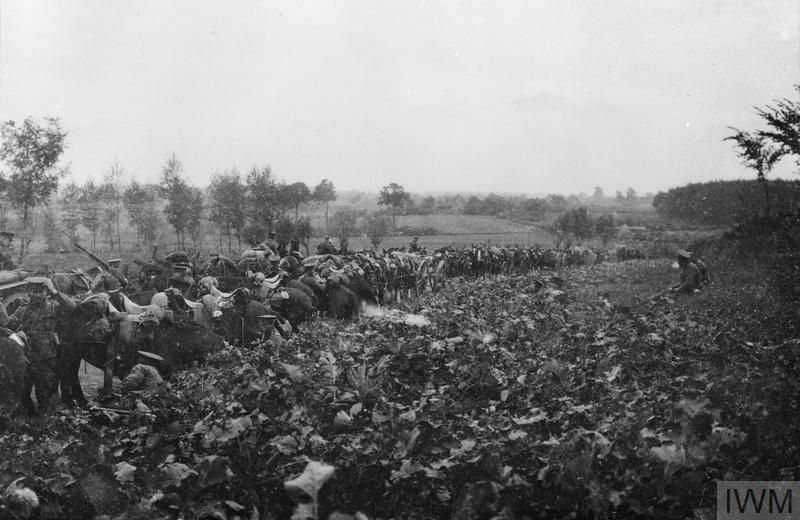St Julien
The Second Battle of Ypres began in the northern sector of the Ypres Salient. It started on 22 April 1915 when the German Fourth Army carried out a surprise attack against two French divisions holding the Allied Front Line. On that day the warm, sunny spring afternoon was suddenly shattered at 5pm with a devastating and frightening new development in modern warfare: a cloud of poisonous gas. The Battle of St Julien was the second phase of the Second Battle of Ypres.
The Honour was awarded to the 3rd Hussars.
Bellewaarde
The Second Battle of Ypres began in the northern sector of the Ypres Salient. It started on 22 April 1915 when the German Fourth Army carried out a surprise attack against two French divisions holding the Allied Front Line. On that day the warm, sunny spring afternoon was suddenly shattered at 5pm with a devastating and frightening new development in modern warfare: a cloud of poisonous gas. The Battle of Bellewaarde Ridge was the fourth phase of the Second Battle of Ypres.
The Honour was awarded to the 3rd Hussars.
Detail
The Second Battle of Ypres
The 3rd Hussars were on exercise in the Forest of Nieppe, when early on the 23rd, notice arrived that the 2nd Cavalry division was marching. They reached Vlamertinghe the following morning.
Then, employed as infantry, they were in action for most of the next nine days, mainly in the Wieltje trenches north-east of Ypres, about a mile and a half from St Julien, where the Germans were massing in strength.
The only real danger was the constant shelling-until Sunday the 2nd of May. The morning was quite, but, at 4.45am a heavy machine-gun fire broke out on the left of the 3rd Hussars trenches. Fifteen minutes later, ‘a wall of green-yellow cloud was seen to rise … from the ground to the north-west’ and sweep towards the brigade, ‘accompanied by a very evil smell’, and soon afterwards ‘large numbers of infantrymen came streaming past the regiment’s trenches’.
The cloud of chlorine was thinner when it came down on the Carabiniers and the 3rd Hussars, who only that morning had been issued with crude respirators, but high explosive and gas shells, which affected the eyes, began to rain down in a continuous crash.
So great was the confusion that, at one time, part of the regiment was ordered to hold its trenches in reverse.
The hero of the hour was Regimental Sergeant-Major Smith of the 3rd Hussars, who left the trenches under heavy shell fire, rounded up the retreating gas-dazed infantry, and placed them in dug-outs behind the regiment. For his ‘gallantry and resourcefulness’, Mr Smith was awarded the Distinguished Conduct Medal.
The battle continued through the month of May. The regiment was withdrawn from the Wieltje trenches on the 3rd, but they were back again by the 14th. For a week they stood, and sometimes tried to sleep, up to their knees in mud and water; and when they were relieved on the 21st, many of the men were suffering from ‘trench feet’.
On the 22nd of May, the 2nd Cavalry Division went into reserve. Next evening, three officers and seventy men of the 3rd Hussars were sent to dig trenches near Zillebeke: they returned at 2.30 in the morning, when moments later the Germans had launched another attack under the cover of poison gas, against the British east and north-east of Ypres, and had gained a foothold in the trenches about the Bellewaarde Lake and the Ypres-Roulers railway.
Twenty hours later, as the regiment stumbled along the same railway, they found many gassed men lying dead by the track, and they were shelled all the way to their appointed trenches in Sanctuary Wood, just south of Hooge.
There, and for the next five days and nights they held the line in expectation of a fresh assault. But it never came: the German attempt to break through towards Calais had failed.


